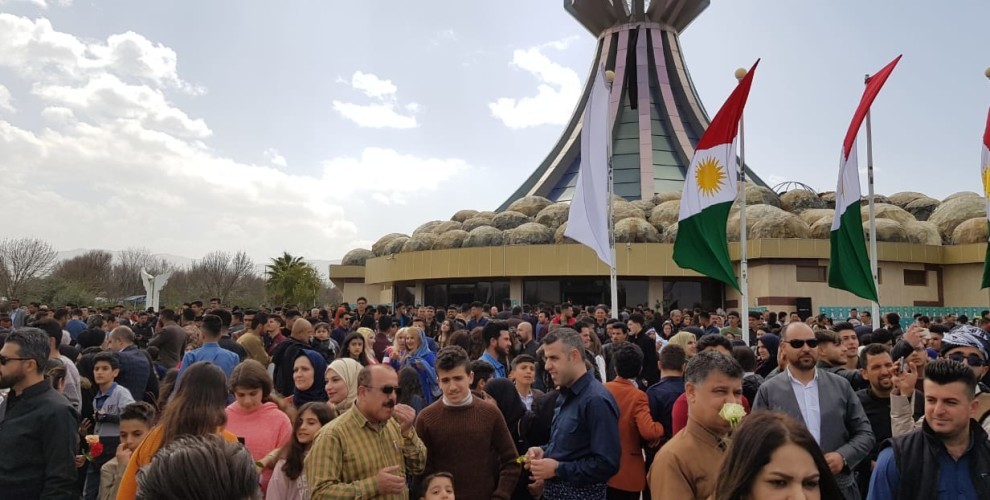Thousands commemorate the victims of Halabja massacre
On 16 March 1988 some 5,000 Kurds, mostly women and children, were killed when deadly gas was released on the northern town of Halabja by Saddam Hussein's forces.
On 16 March 1988 some 5,000 Kurds, mostly women and children, were killed when deadly gas was released on the northern town of Halabja by Saddam Hussein's forces.

Thousands of people dressed in black began to gather at the genocide monument and museum in Halabja starting from early this morning, to mark the 31st anniversary of the massacre.
People came to pay respect to the 5,000 victims from Sulaymaniyah, Ranya, Kaledizê, Sharbajar, Sharezor, Hewlêr and Behdinan.
Official Ceremony
Regional government authorities, Sulaymaniyah and Halabja governors, PUK administrators organized the official ceremony to pay tribute to the victims of Saddam gas attack in 1988.
After the official ceremony, wreaths were left at the memorial by the government, parties, embassies and civil society organizations.
Tevgera Azadi and Umut Association visited the graveyard where the martyrs of Halabja are buried.
Background
On 16 March 1988 some 5,000 Kurds, mostly women and children, were killed when deadly gas was released on the northern town of Halabja by Saddam Hussein's forces.
A Belgian-Dutch team from Medecins Sans Frontieres (MSF), the first foreign medical mission to reach Halabja, confirms the use of mustard gas and probably of cyanide.
By March 23, the first images are broadcast on Iranian television. Corpses scatter the streets with no obvious sign of injury, although witnesses say later some had blood around their noses.
An AFP special envoy, Michel Leclerq, describes the horror in a story filed on 1 April: “Not the slightest stir, not a cry, not a movement: Halabja ... seems frozen, immobilised in a deep sleep, while canons thunder in the distance.”
The "houses remain standing, the stores are full" said Leclerq, but "no soul lives here since Iraqi planes released their deadly poison".
It would be 20 years later when General Ali Hassan al-Majid, known as "Chemical Ali" for ordering poisonous gas attacks, is hanged in 2010.
A cousin of Saddam, al-Majid is found guilty of having ordered the attack on Halabja.
He gets four death sentences, including for Halabja, but insists he acted in the interests of Iraqi security and expresses no remorse.
In 2012, the Iraqi government hands the authorities in Halabja the rope used in his hanging.
Saddam Hussein himself is hanged in 2006, three years after the US-led invasion of Iraq.